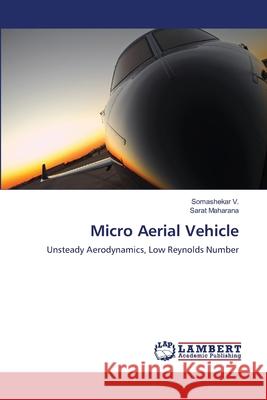Micro Aerial Vehicle » książka
Micro Aerial Vehicle
ISBN-13: 9783659143878 / Angielski / Miękka / 2014 / 136 str.
A bird or insect sized flapping wing Micro Aerial Vehicle (MAV) whose wingspan is of the order of a few centimeters cannot be physically built or flown today; they can be designed, tested, flown and studied on the computer using numerical simulation technique. While finalizing a design is quite significant in case of MAV, understanding the flow field environment in which MAVs fly is equally a requirement. The flow field environments encountered by Micro Air Vehicles are fundamentally unsteady - whether for fixed-wing, rotary-wing or flapping-wing configurations. High lift generation is typically a result of unsteady fluid flow phenomena in flapping flight of small birds and insects. Along with a good understanding of flow field environment of an MAV the insight into the aerodynamics characteristics of it calls for an investigation. These characteristics greatly influence the design of a prototype of an MAV which can serve the purpose of a specific application. As a first step towards exploring the flow environment and computing the aerodynamic characteristics of a smaller MAV we have chosen a fixed wing MAV for which a study is attempted considering a three dimensional flow field.
A bird or insect sized flapping wing Micro Aerial Vehicle (MAV) whose wingspan is of the order of a few centimeters cannot be physically built or flown today; they can be designed, tested, flown and studied on the computer using numerical simulation technique. While finalizing a design is quite significant in case of MAV, understanding the flow field environment in which MAVs fly is equally a requirement. The flow field environments encountered by Micro Air Vehicles are fundamentally unsteady - whether for fixed-wing, rotary-wing or flapping-wing configurations. High lift generation is typically a result of unsteady fluid flow phenomena in flapping flight of small birds and insects. Along with a good understanding of flow field environment of an MAV the insight into the aerodynamics characteristics of it calls for an investigation. These characteristics greatly influence the design of a prototype of an MAV which can serve the purpose of a specific application. As a first step towards exploring the flow environment and computing the aerodynamic characteristics of a smaller MAV we have chosen a fixed wing MAV for which a study is attempted considering a three dimensional flow field.











